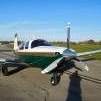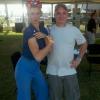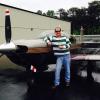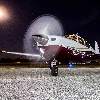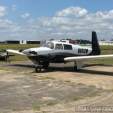Leaderboard
Popular Content
Showing content with the highest reputation on 09/14/2017 in all areas
-
3 points
-
Unlike your O, the M20-C is a simple machine. Don't overthink it, and don't try adding unnecessary complexity. But it works, and it flies like a Mooney. Fast. Efficient. Simple.3 points
-
2 points
-
Jolie, I live just across the LI Sound, and can provide the aircraft and canopy for such a display. Let me know if you want to chat about coordinating this. I'll send a similar note to the Ambassador mail address. Steve2 points
-
The article stated that there were 208 known in flight airframe failures of the model 35 as of 1978. The earliest model 35, referred to as the "straight 35" or pre-A35 Bonanzas most often failed at Wing Station 66, not the center section which is the subject of ADs. Beechcraft did not have any spar web in the original model beyond that point (Wing Station 66). The later models with beefed up Wings most often tend to fail in the tails. The later approved tail cuff is only part of the solution. The ruddervators are prone to flutter with very little margin for safety. Proper balancing is critical. The ruddervator and trim cables need to have proper tension and must be carefully inspected (and replaced when worn). There is a lot more to it than adding the tail cuff, which, by the way, had to be removed from the earliest models. They background information of the design, flight characteristics, the breakdown of failures by specific model, comments by engineers and investigators involved in studying the problem, comparisons with the straight tail Bonanzas and other airplanes makes for fascinating reading. Comparatively, when you look at the Mooney from a structural integrity perspective, you can appreciate it for the good airplane that it is.2 points
-
Unfortunately you won't know it with a McCauley. they have a very limited amount of grease in them to begin with. A small leaks over a couple hundred hours of operation depletes the grease. There will be no Big Blowout like a hartzell will do. One of the worst things you can hear a McCauley owner say is" it had a slight grease leak, then it stopped" or " it hasn't leaked bad enough for me to worry to much about it". When it stops leaking, it's out. Metal on Metal is not good, plus the unprotected parts corrode very fast. When they stop leaking grease, an prolonged operation happens, In most all cases when it does finally come to the shop the bill has more zeros than nessasary. Thousands of Dollars to fix what a $800 reseal would have covered. This is what no grease in a propeller will yield. Massive corrosion, an Steel parts eating them selves up2 points
-
2 points
-
I saw a Cherokee 6 the other day, it was a load hauler, had every seat removed sans the pilot seat. Doors opened up, I could've built a gym inside. I'll refrain from posting the picture in case it wasn't legal, but I was under the assumption a change in the W&B on hand is all that was needed.1 point
-
1 point
-
Crashed yesterday on a flight from Donaueschingen towards Albenga near the resort of Braunwald, canton Glarus in Switzerland. News report in German with pictures 2 on board, on pilot (64) and one pax, both perished. What went on is unclear. They departed in the evening from Donaueschingen direction Albenga and crashed half an hour after departure after apparently sending a distress message. The weather in the Alps was bad with cloud and turbulence, however a picture of the crash site taken by a webcam at the time shows the area in VMC with a cloud cover above it. General Aviation Forecast showed all alpine crossings to be closed for VFR due to low cloud over the passes. The destination was closed already at the time of the crash, so one wonders why they still tried to go there.1 point
-
Have you done a compression test? You could have high crankcase pressure caused by a bad cylinder. How do your spark plugs look?1 point
-
To each his own. While I love my Mooney, I'm pretty sure it's the last certified airplane I'll ever own inless the part 23 re-write is significant.1 point
-
I got a chance to compare the radar track's last recorded position to the accident site in google earth and I came up a distance of about 6nm further south from the last radar hit and the accident site. 6 minutes before the accident, the radar data showed the plane in a climb to 6700' when ground speed dropped to the low 60's. Then just before the accident, it leveled, build up speed and then was climbing again at 9300' with airspeed decaying to the low 90's at the last recorded point. Straight ahead of them was higher terrain with a ridge line as high as 9500', which must have been obscured by the clouds. Impossible to tell at this point how much terrain clearance the plane has as it approached the ridge line and went over but it would seem not much at all; especially give the weather. Could the pilot really have been trying to stay under an overcast and clear the mountains? But the plane managed to make it over and came down directly on the the other side of the high ridge line. With the reported turbulence and strong winds, downdrafts seems very plausible at this point. But with no radar data near the crash site it leaves us with little to go on. The much taller Sierra Nevada mountains are in my backyard so to speak, and I've flown around them numerous times to my favorite skiing destination. 60 to even 100 kt winds in the passes are not uncommon when winds aloft are half that. Although wind direction is just as important as magnitude, I wouldn't dream of going near them with only 2000' of clearance - my profile is to cross at over 4K to 5K and also depart away from the mountains into smoother air to get to altitude in smooth air before turning towards them. Mountain obscuration adds another dimension to the challenges as well. Climb rate suffers dramatically in turbulence. Wouldn't even consider departing if flying an NA aircraft.1 point
-
1 point
-
4 seats 155 knots 160-200K. That money will buy a really nice Mooney and all the money to maintain it for a long time. Also look at the RV10 pictures of crashed ones. The cabin folds up. In this comparison I'll take certified any day.1 point
-
Nothing illegal about taking your seats out, just make sure you make a note on the weight and balance if you really want to be specific with it.1 point
-
This will not help with being close to the panel but you can remove the back seats and gain a tremendous amount of room for the dogs and other stuff and make it a 2 seat aircraft. I've always said the B, C and E models are the best 2 place 4 seat aircraft you can find. Also when in cruise slide the seat back and it will give you more room. I'll slide mine all the way back during cruise. At least you will have some room in cruise phase of the flight.1 point
-
I had to move the airplane once to get out of the way of a POTUS TFR. And I didn't even like the POTUS (actually, I like him just fine compared to the guy now). I really feel sorry for all those guys in Florida who get to take every weekend off whether they like it or not.1 point
-
1 point
-
1 point
-
I know the feeling. It's been 2 years and one week since I last flew my plane. Hopefully I'll have an update today. Either way, it'll be months at a minimum before I can fly it again given that I moved recently.1 point
-
1 point
-
Couple of things to consider , The Bonanza is probably the ultimate machine as far as cost verses mission , There are almost NO in flight breakups in the last 30 years as long as the cuffs are installed , In the Pilots seat , there is no conceivable difference as far as space is concerned between short, medium, and long Mooneys , I would discount the Commanche series , They are extremely old , and their systems are archaic at best , As far as a 182 being nose heavy in the flare , it is no heavier in the flare than a Mooney , Compare it to a 172 , and I agree ... The Bellanca is a plywood aircraft , with archaic systems , that NEEDS to be kept in a Hangar , It also REQUIRES a mechanic that is well versed in these aircraft , its systems and construction are unique to itself.... When you pick an aircraft , consider mission FIRST , The Cessnas (182) are the most mission capable aircraft bar none , I can get 135 knots INDICATED at 12 GPH and land in the 40s if I have to ... when somebody touts mission , ask yourself if you have ever seen a Mooney working in Africa , or Alaska..... The Cardinal is a roomy aircraft , but it is underpowered , The Cessna is probably a good fit for you , So is the Bonanza...1 point
-
I tiresomely say the hardest part of flying the PA46 is getting into the pilot's seat. But the OP was talking about his wife's discomfort. Ask a typical non-pilot wife to compare climbing up onto the wing of the Mooney then plopping down into the seat versus going up the short air stair and settling into one of the rear seats in the Mirage. Which will she prefer? It is a rhetorical question.1 point
-
I had inexpensive access to a 300hp Lance ($100 wet) back in the '80s. It was no where near as much fun to fly as my M20E but it was about the same speed and very comfortable. And of course it was roomy with club seating in the back.1 point
-
I recently got in to a mirage for the first time. I found it very difficult to move forward and back in and from the pilot seat. Very tight. I don't think I would look forward to making that squeeze all the time. My other plane is a Fixed gear Saratoga. Have had it for quite a while and love it. Easy and reasonable to maintain and the big back door with fold up cargo panel is great for loading people and stuff. Basically a Six 300 with tapered wings. The Six as you probably know had the Hershey bar wings. I have north of a 1400 useful load which allows for full fuel and about 850 lbs of payload. Many of the earlier pa32s had better useful loads than that even. I cruise at 145 true at about 16gph, and for the frequent trip we make between Atlanta and st Augustine the bravo beats it by only 20 or so minutes, which one could argue is a big percentage difference considering length of the trip. It is on longer trips that the considerable speed delta between the two planes is really noticeable. Speaking for myself, I usually have at least as much fun flying vs whatever I am doing when I get to the destination so a little more time flying never bothers me!1 point
-
Possibly, even though the crash site was fully VMC at the time of the accident. It is going to be investigated by the Swiss SUST, their NTSB. Not sure how to call this. In the last 10 minutes they most probably were flying in turbulent conditions but there should have been time and space to turn around. I have flown in that area and with the weather and turbulence there was, my primary question is, why did they try to go at all. It was quite clear that a VFR flight through the alps was impossible that day, and if they had not even watched the weather, listening to the news should have done it... in the morning of that day, a Swiss Military PC7 crashed in similar circumstances a few miles west of there. Now if a turboprop trainer with the best pilots of the country in terms of navigation abilities in the alps can't do it, then certainly not a private pilot with a 200 hp Mooney Frankly, the Swiss alps are one of the most dangerous areas to fly in Europe and need respect and great care. This year alone this is the 4th accident with people killed in about 3 months time. It is more than obvious that a lot of pilots are NOT qualified to fly there and the question remains if for the future, more strict regulation is needed to protect these people from themselves. I hate myself saying that but the figures show that mountain flying is something that most PPL's in Europe are not qualified for. It may well have to do with the fact that most PPL's fly way to few, some less than 10 hours per year due to high cost and time constraints. In any case, the current series of accidents are almost asking for something to be done.1 point
-
1 point
-
I'll see if there's any identification on the plugs when I replace them. I don't want an electrode separating when we visit the US southwest in a few weeks. I'll also respond if/when I get some info back from Tempest.1 point
-
Probably too late in the process, but did you give Mooney a crack at it? I have no idea if the museum in Kerrville is really going to happen or not, but might be worth a phone call before you start the saw.1 point
-
One other thing to consider - if you still have a prop with the 100 hour AD - you might consider having the update that puts a red dye oil in - it eliminates the AD.1 point
-
1 point
-
Here is the real story of the Mooney retractable step servo manufactured by Brittain Industries. The rubber bellow for the step servo (P/N 4059-1) is a part number 1551 (seal only). It is not manufactured by Beech and it is not used in the KingAir. It is however used in the Beech elevator servos in conjunction with their pitch stabilization systems. The Brittain rudder boost servo used in the Beech King Air is a P/N 1900-7.4-1 which uses a rubber bellow P/N 1900-140. These are all proprietary parts of Brittain Industries, Inc. and the seals 1551 and 1900-140 are very different in length and diameter. The 1551 mold was damaged by a vendor in Missouri in 2013 and since that time the seal has been available only sporadically as the mold was moved from vendor to vendor in an effort to salvage the tool. In November 2016 it landed with a vendor in Ohio who has repaired the guide pins and the mold core and the mold now produces a cylindrical part. However, because of previous un-approved revisions to the mold the material called for on the design drawings now cures too quickly during the molding process resulting in a seal that is too thick for use with the servo assembly. Brittain is in the process of both experimenting with other materials and also working to produce a new mold entirely. In addition to use in the Mooney retractable step servo the Brittain seal P/N 1551 is also used in the Precise Flight speed brake system and as noted above, used by Brittain for production of Beech elevator servos in conjunction with their pitch stabilization systems. All other Brittain servo assemblies; aileron, rudder, Mooney elevator and King Air rudder boost are still being repaired and produced new by the company in Tulsa Oklahoma and they plan to have the step and Beech elevator back online by years end with the creation of the new mold for the 1551 seal.1 point
-
1 point
-
1 point
-
1 point
-
I didn't notice the erosion until after I cleaned the plugs so I don't know top or bottom, but 5 (out of 8) were eroded like the pictured one, so it had to be at least one top or bottom and at least 3 cylinders. Gladys uses about a quart after 20 or so hours after an oil change, then another quart after the next 15. Oil stays clean (fully transparent) for about 25 or 30 hours. ( I run EXTREMELY lean on the ground and 50 DF LOP at cruise) Compressions remain at high 70's. I took the plug picture after I had put anti-seize on the threads.... no oil. It looks like oil is on the electrodes because of the bright sunshine I took the picture in. The electrodes are dry and when I removed the plugs, they were all evenly coloured a light tan... perfect.1 point
-
@salty are you going to be at the Mooney Summit in PCB in a couple of weeks? If not for the whole weekend, the Friday gathering at the airport is open to everyone, it would give you an opportunity to see almost every Mooney Model on one ramp. Although, getting out of the longer Mooney's is not all that much easier than the short ones.1 point
-
I have spoke to Alan on the subject. I'm thinking I might just buy once, cry once with the PlanePower unit and future-proof the plane1 point
-
1 point
-
I revised the above post to add an additional auction item. L3 has donated a ride with the AeroShell Acrobatic Team!1 point
-
I put whelen lights in the wingtips. Really pretty easy. Removed power supply and spliced wires. I did not connect the sync wire. It really doesn't bother me if the lights don't flash exactly the same. I heard the sync wire can be aggravating b/c you have to thread it through to the other side.1 point
-
The stuff that is out there is getting pretty good and prices are coming down. A buddy put the strobing colored LEDs in his Cherokee. They're pretty nice! I think it won't be long until LEDs are inexpensive and ubiquitous. These: http://www.aircraftspruce.com/pages/el/ledlighting_znavstrobe/navstrobesextant1.php1 point
-
If only every previous owner took such good care of his Mooney by waxing it too much.1 point
-
I would not ever overlook the Encore. In fact one of the reasons for hunting down and acquiring one of the elusive 252's was because it could be converted to an Encore. A couple of notables on this board, @Parker_Woodruff and @kortopates have done this very conversion. I hope my 252 will be added to that list soon. There is a large box in my garage right now with almost all of the parts needed for the conversion. It's taken awhile to find and acquire them, but I'm almost there.1 point
-
Macaulley prop hubs (at least the two blade I've got) don't get greased at annual like the Hartzels. Anthony that was maybe three years ago when I had my Maccauley sling grease in Princeton. I've put about 250 hrs on it since then and have done three annuals with two different shops and everybody is telling me keep going. When it's time for a reseal I'll know it.1 point
-
1 point
-
1 point
-
1 point
-
1 point





